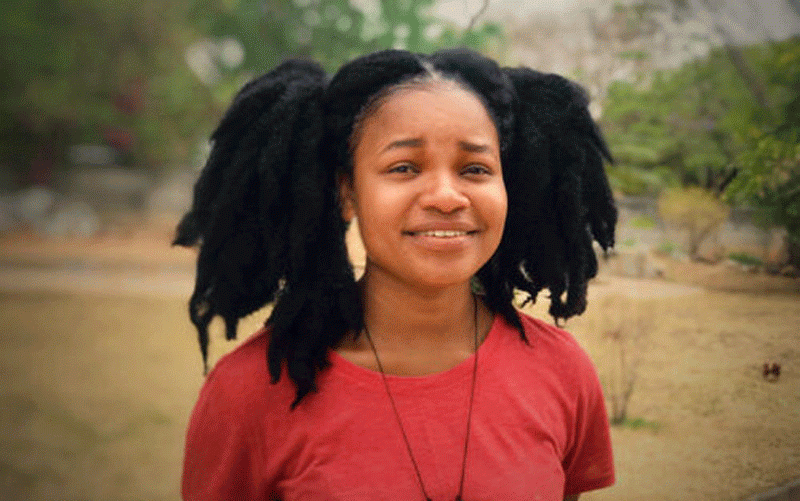
A SOLO exhibition Mupfumi Ndini at Artillery Gallery in Harare marks a bold entry and self-introductiston for young female artist Progress Nyandoro.
The audacious Mupfumi Ndini title, which translates to “I am the rich one” is backed by a whimsical attitude in Nyandoro’s mixed media creations.
Made out of fabric, paint, paper, wool and found objects, Nyandoro’s work features playful figures in colourful clothes with wide grins and beaming faces, thereby setting the tone for a positive vibe that runs through the show.
Mawuya, which means welcome, depicts a group embrace with many outstretched arms making it difficult to point out the one being welcomed among the gleeful bunch.
Their wide eyes seem glazed with emotion, while others have shut their eyes as if to shed tears of joy.
Jikinya displays seemingly misplaced limbs, raised hands with open palms, with facial expressions showing elation and ecstasy as the youthful subjects dance according to the title. Both works infect the viewer with joy in celebration of life.
Nyandoro’s vision is that of a young woman living life to the full, unhindered and uncensored. The entrance to her show is a small, elongated frame showing a bikini-clad body without a head and arms like a mannequin.
Its seductive title Unfinished Story 2 may be a forewarning to her doubters and critics to expect more.
- Mugabe’s art: A celebration of African childhood
- Nyandoro envisions a beautiful life for women
- Zim’s visual artist makes waves in Europe
- Grey-zones speaks for the unseen
Keep Reading
The artist’s decidedly positive outlook culminates in the piece Masahwira, an installation recreating a decadent scene of an exotic beach, with the background being a piece depicting a mermaid-like figure reclining under a huge umbrella.
In front of the frame, falling like pennies from heaven is a shower of decommissioned Zimbabwean currency in coins suspended in the air.
It is a picture of an independent woman enjoying her affluence.
The title, which refers to a third party, can roughly translate to “close friends” with a hint of envy, but no malice.
Another piece, carries the inclusive title Tose (All) and shows a happy family (with a conspicuously absent patriarchal figure) sharing a meal.
The title is a subtle shift from Tese which means together. In its format the title means all of us and seems to affirm the status quo in this apparently woman-led household.
Not all of Nyandoro’s work is concerned with the idealised wellbeing and material consumption.
Kwatinobva is a regression to childhood that shows a child in diapers, while Machembere illustrates the transmission of knowledge through storytelling from an old woman to the attentive boy and girl seated at her feet.
Murapi is portrait of a female traditional healer surrounded by plants, while Nguwo dzatateguru depicts an authoritative male figure seated on a chair and holding a staff while he is dressed in the traditionally revered red, black and white retso cloth.
Kupira has a cubist appeal in its abstraction, as it depicts a figure in a forest, holding a clay vessel while kneeling under a tree in an act of oblation as the title suggests.
As with most Zimbabwean artists using found objects, Nyandoro began using rags in her work as a cheap alternative to buying canvas, brushes and oil paints.
“I use personal unwanted clothes, and also go to the market for second-hand clothes to buy material. I look for specific fabrics that suit my needs for a particular project,” she said.
Nyadoro’s use of textile finds local precedence in other female artists such as Kresiah Mukwazhi, Shamilla Aasha and Georgina Maxim.
Before that, the practice was foreshadowed by the makers of bed covers and doormats who sewed and knitted using assorted pieces of discarded fabric and yarn.
The bodies and faces of the cartoon-like characters in Nyandoro’s work also have a close link with dolls made from cloth that many women have possessed at one time in their childhood.
The exhibition, Mupfumi Ndini is a highlight of what a woman’s life can be in spite of challenges.
The models are not exclusively female, but the artworks project the artist’s worldview from a young woman’s perspective.
Even if the world was broken, Nyandoro transcends survival by living for beautiful things.
Follow us on Twitter
@NewsDayZimbabwe










